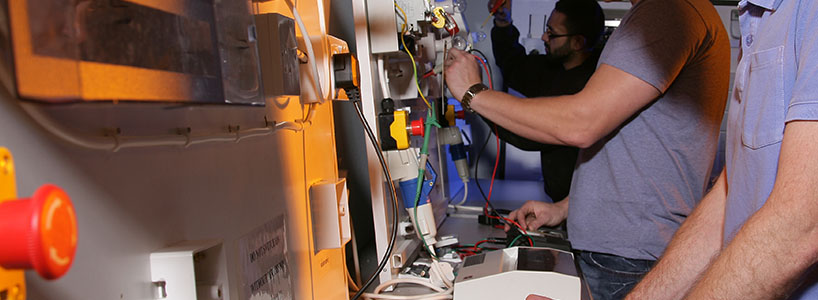We’ve made it as easy as can be to study for your AM2 Electrotechnical assessment with two easy-to-use documents packed with top tips and helpful hints if you’re applying for your AM2 course.
The helpful guides will assist candidates in preparing for forthcoming exams, providing essential information on compulsory elements (such as the AM2 Self-Assessment checklist), as well as a comprehensive list of the most common errors candidates should be sure to avoid.
These helpful hints and tips include making sure to familiarise yourself with all aspects of the Building Regulations and Wiring Regulations, together with post-assessment administration advice, including the process should you need to re-sit the exam.
Back to Insights
What is AM2?
The AM2 Electrotechnical Assessment is issued by the National Electrotechnical Network (NET), are intended as a revision guide to help apprentices and trainees in preparation for the AM2 assessment, which forms an essential part of the Electrical Advanced Apprenticeship.Common Errors to Avoid
We’ve all been there, sometimes we’re nervous when taking an assessment and all of our hard work and revision goes out of the window. Here at logic4training we’re keen to help you get through your assessment with ease, so here are some common errors to make sure you avoid when taking your AM2 course:- Candidates have not demonstrated the correct procedure for Safe Isolation of Supplies
- Candidates do not install the circuits in accordance with the requirements of BS 7671
- Candidates do not select the correct instrument for the required tests
- Candidates do not carry out Safe Isolation procedures correctly
- Candidates do not understand how to access information from BS 7671
The AM2 Course
The AM2 course comprises four assessment areas:- Practical installation (7.5 hours)
- Inspection and testing of the installation (3.5 hours)
- Fault finding (2 hours)
- Online theory assessment (1 hour)
What to Expect
Candidates will be asked to install, terminate, connect, inspect, test, commission and diagnose faults in accordance with the installation specification provided by the assessor and in accordance with the relevant statutory and non-statutory regulations on the following:- Lighting and power circuits
- A three-phase distribution board and sub circuit
- A central heating/sustainable energy system
- A safety services circuit and device
- A data cabling system









